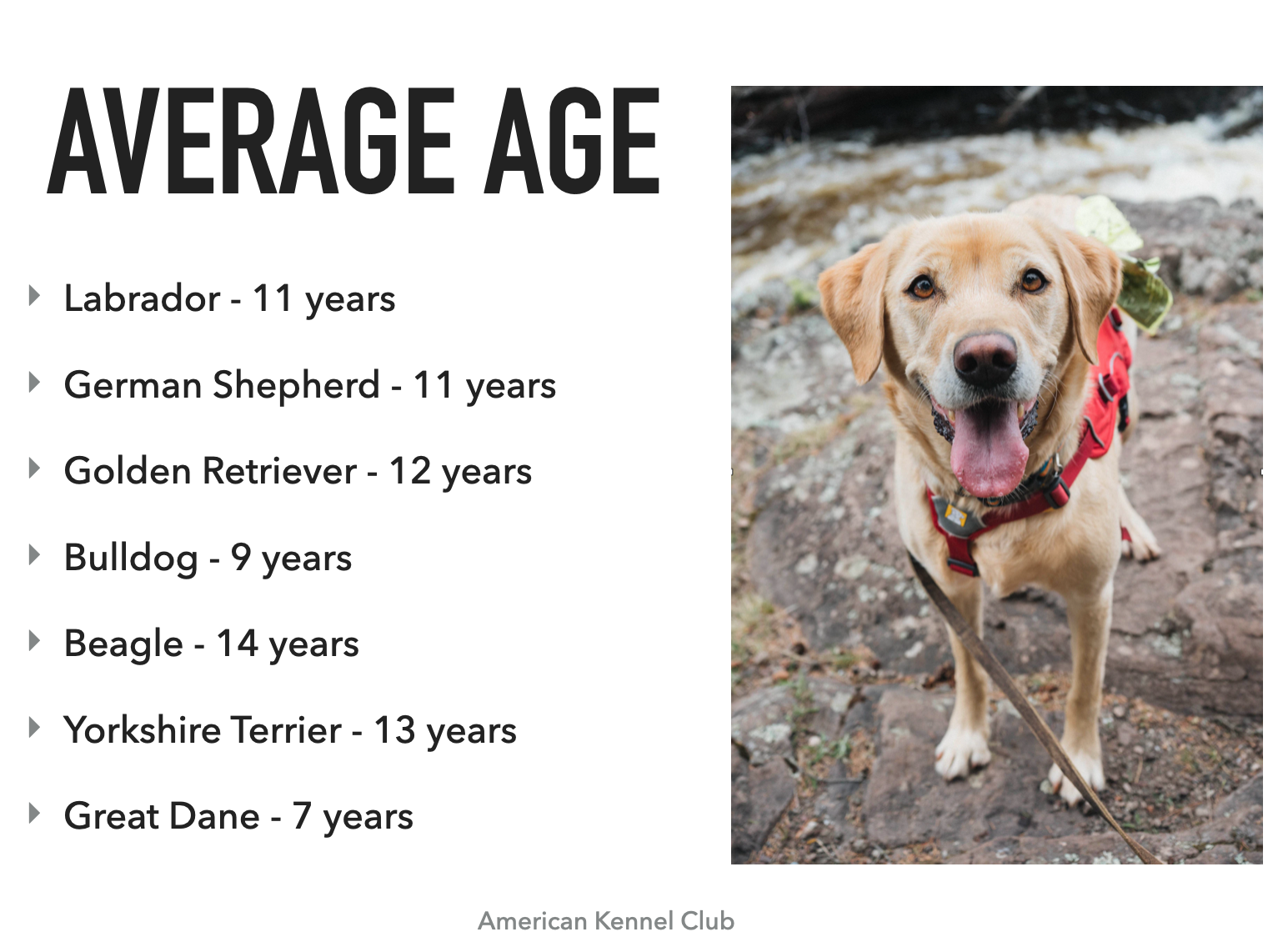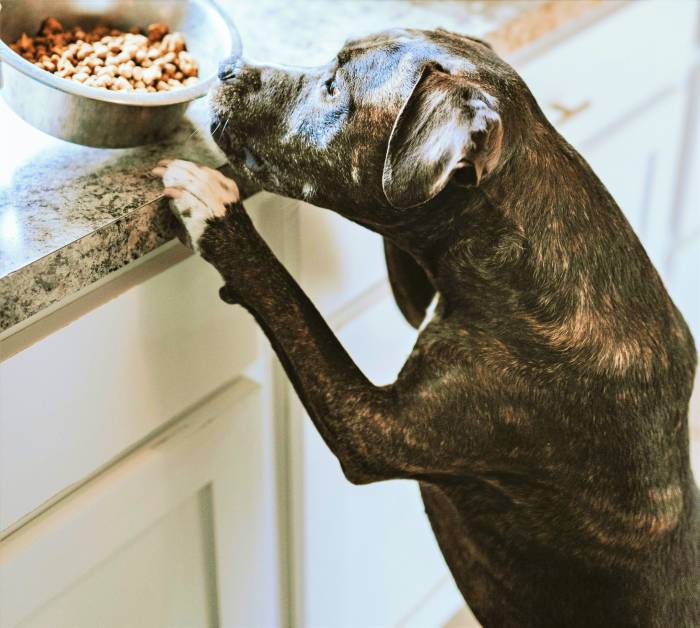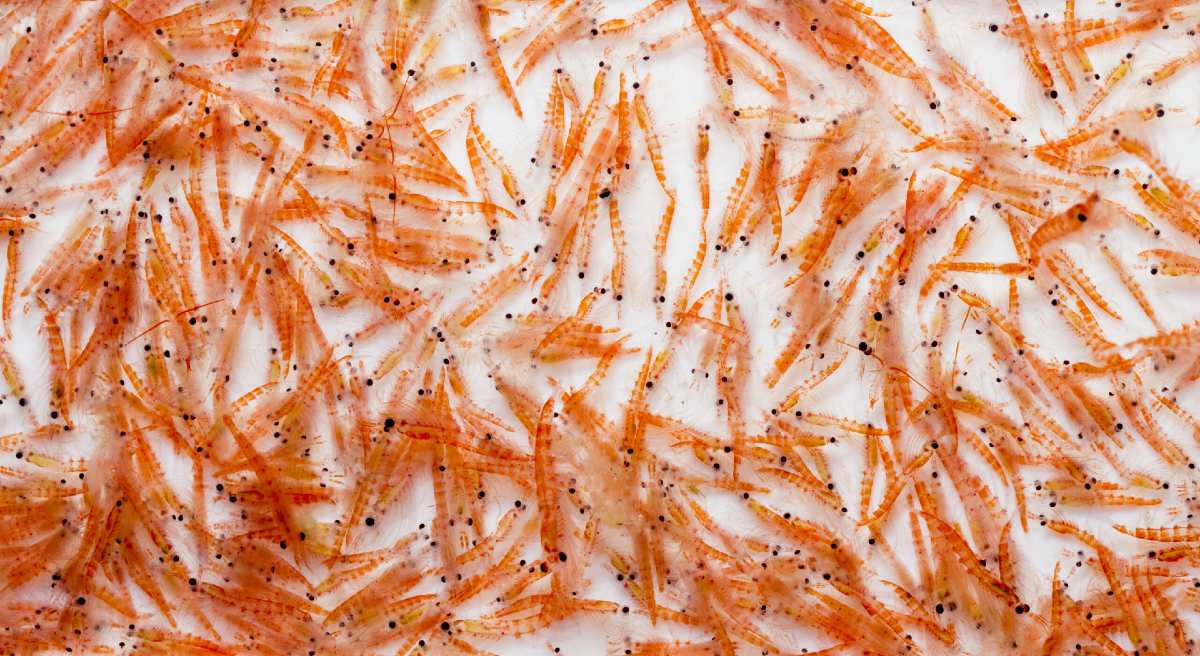You have the power to change your dog’s life for the better by taking some simple steps to help them truly thrive.

The secret? Well, there are a few.
Hint: nutrition is a huge factor.
Here are 3 crucial takeaways from Dr. Bessent’s talk on chronic disease, nutrition, and the superfoods that are missing from your dog’s bowl.
On The Agenda
1. Our Pets Face An Epidemic Of Chronic Disease and Short Lifespans
What’s the “normal” lifespan of a dog? Most people would probably say 10 or 11 years old. And for larger dogs like Great Danes, we might even think 7 years old is normal.

But it’s not normal — or at least, it doesn’t have to be. Pet-parents (like you!) have the ability to change this so-called “norm.”

Have you heard about Maggie the Kelpie from Australia who lived to be 30 years old? Yes, 30! We can take some pointers from her lifestyle:
- Fresh farm food diet
- Plenty of exercise
- Lean body weight
- Purpose (she worked on a dairy farm and helped bring the cows in)
- Little to no toxins in her system
- Play and low-stress lifestyle
Meanwhile, our average household dogs are living to be about 10 years old — and big dogs are dying even younger. Why?
As of 2018, over 50% of cats and dogs were considered overweight or obese (according to the Association for Pet Obesity Prevention). And obesity — along with poor nutrition — can cause a wide variety of chronic health problems that can shorten our pets’ lifespans.
Common Chronic Problems In Pets
- 20% of dogs older than one year and up to 80% of dogs older than eight years are reported to have osteoarthritis.
- 80% of dogs have some stage of periodontal disease by the age of 3.
- Estimates 1 in 4 dogs will develop cancer at some point, and almost 50% of dogs over age 10 will develop cancer.
- Diabetes affects 1 in 308 dogs and 1 in 230 cats. Since 2011, diagnoses have increased by 32% in dogs, 16% in cats.

But don’t panic! There is good news: there are concrete steps you can take to help your pet live a long, vibrant life. And it all starts with what’s in the bowl.
Wisdom from Dr. Bessent: By feeding real, whole food and limiting toxins, we can massively improve the health and length of life of our pets.
2. Kibble Leads To Overfed And Undernourished Pets
Think about obesity in humans. We can eat huge quantities of junk food and become obese — but still lack vital nutrition. The same is true for our pets.
Most pets are fed kibble. And unfortunately, kibble falls short in several key ways.

From a regulatory standpoint, kibble must have all the macronutrients (protein, fat, fiber, moisture) and micronutrients (vitamins, minerals) needed to sustain life. The presence of these macro and micronutrients has led kibble to be deemed “complete and balanced” — which is misleading.
Wisdom from Dr. Bessent: Yes, kibble can sustain life. But it’s a bare minimum. It doesn’t provide the necessary nutrition required for your dog to truly thrive.

Think of kibble as junk food:
- Kibble is heavily processed, pre-packaged, and often has a shelf life of several decades.
- Kibble is loaded with carbohydrates (40-60%), which isn’t species appropriate for dogs. It can lead to chronic inflammation and ultimately a long list of chronic health conditions ranging from diabetes to GI problems to cancer.
- During manufacturing, kibble is heated to extremely high temperatures (275-572 degrees F) — sometimes up to 5 times. This is partly to kill pathogens, but it also produces toxins and carcinogens from overheated proteins and carbohydrates. Plus, any benefits the food may offer (like antioxidants, flavonoids, or enzymes) are obliterated by the heat.
- Many kibbles contain Meat and Bone Meal, which can be a combination of anything from ground up carcasses to road kill to feathers to unwanted slaughterhouse byproducts to expired food from grocery stores.
- Kibble is packed with artificial flavors, additives, and preservatives. It is then sprayed with synthetic vitamins and minerals to meet regulatory requirements. Not to mention, many brands still use known toxic ingredients like BHA, BPA, and more.
We can do so much better — and so much MORE — for our four-leggers!
To truly thrive, our pets need real, whole food in appropriate proportions for their species paired with regular exercise and lean body weight (Learn more with “What Makes A Carnivore”). When fed the right nutrition and given the space to exercise, our dogs naturally lose any extra weight.
3. Adding Antioxidants and Omega 3s To The Bowl Is Vital

Now, get ready to meet the stars of the show (seriously, put your hands together!).
You truly do have the power to make a radical change for your pet’s health. And it starts with antioxidants and omegas.
Antioxidants:
Wisdom from Dr. Bessent: antioxidants are the most underutilized addition to your pet's bowl
Everyday, free radicals are released inside your dog’s body, which sets off a chain of reactions that leads to cell damage known as oxidative stress. (Learn more with “Why Prioritize Antioxidants For Dogs”).
Antioxidants neutralize free radicals, which helps prevent oxidative stress from occuring in the first place — preventive care is powerful!
Keep in mind that some amount of oxidative stress is inevitable. But many dogs experience excess oxidation, which is not normal and can lead to cell damage, inflammation, DNA damage, diabetes, autoimmune diseases, inflammatory bowel disease, greying at 6 years of age, and more.
Plus, oxidative stress leads to premature aging.

So where does that excess oxidation come from? Well, it can result from a wide variety of sources, ranging from air pollution (think second-hand smoke) to chronic exposure to toxins to diet.
Speaking of toxins: remember how kibble gets heated during manufacturing? Yep. That produces toxins and carcinogens.
We expose our dogs to toxins unwittingly in other ways, too. The chemicals in flea/tick/heartworm prevention are extremely hard on your dog’s system. Plus, over-administering vaccinations can introduce more toxins at unsafe levels.
These treatments do help protect your dog (we’re not saying don’t utilize them). But be aware that they introduce the body to toxins and put the liver under a lot of stress.
Consider performing a titers test before vaccinating. Plus, two days before and after a vaccine or flea/tick/heartworm treatment, you should give your dog milk thistle, which is a hepatoprotective herb that reinforces the liver as a protectant and also as a detoxifier.
And of course, load up on those antioxidants.

There are two types of antioxidants: those that are produced within your dog’s body (endogenous antioxidants), and those that are found in their diet (exogenous antioxidants). As your dog gets older, their body produces fewer and fewer endogenous antioxidants (you don’t see puppies running around with greying muzzles). So it becomes absolutely critical that you add antioxidants to your dog’s bowl.
You can find antioxidants in brightly colored fruits and veggies — so share your spinach salad! Toss some blueberries into the bowl. Mush up some yummy sweet potatoes. It’s never too late or too early to start.

Omega 3s:
You may have heard of them, or even use them for their benefits to the skin & coat. But they actually have a lot more to do with health & wellbeing then you may expect.
Dogs can’t produce omega 3s on their own, so it’s essential that you add omegas to the bowl — specifically, omega 3s with DHA and EPA fatty acids.
Omega 3s promote a healthy inflammatory response and support the body in some big ways — from the heart to the immune system! Plus, omega 3s have antioxidant properties (and you already know how crucial those are).

Not to mention, the ideal ratio of omega-6 to omega-3 is 5:1 (or even better, 1:1), but the average kibble-fed dog receives a ratio closer to 20:1 (omega-6:omega-3). High levels of omega 6 (without enough omega 3) can lead to uncontrolled inflammation. Inflammation increases the probability of diseases — ranging from arthritis to diabetes, irritable bowel disease, and even cancer. Making the need to add more omega-3 (EPA & DHA) to your dog’s bowl so much more crucial (and we’re not talking fish oil).
Wisdom from Dr. Bessent: the best omega 3 for carnivores is krill.
In addition to the omega 3s, krill is packed with phospholipids that efficiently deliver the omega 3s to where your dog’s body needs them most.
Krill also contains astaxanthin, which is one of nature’s most potent antioxidants. Remember, antioxidants help prevent problems from happening in the first place — which is the power of proactive care and one of the most important factors to a healthy dog!

Furthermore, krill are tiny crustaceans, which means they don’t hold a lot of toxins or heavy metals like standard fish and salmon oils — and we’re all about minimizing those toxins. (Learn more with “Fish Oil For Dogs And Cats: Is It The Best Choice?”).
Krill is truly THE superfood of all superfoods, and it should absolutely be in your dog’s bowl (just make sure to choose the most sustainable source *woof* and we’re not talking oil).
Whew. That was a lot. But you’ve got this — and it really isn’t hard to change your pup’s life for the better! Here’s a simple checklist to get you started:
- Fresh superfoods packed with antioxidants and omega 3s.
- Daily exercise for lean body weight.
- Low levels of toxins and add Milk Thistle for detoxifying.
- A happy attitude with low stress levels.
Wisdom from Dr. Bessent: “Since we domesticated our animals, it’s our job to help them live the happiest and healthiest lives they possibly can. By raising the plane of nutrition and lowering toxins for our pets, we can give them the tools to truly thrive and the best chance to live a long, vibrant life.”

Share this Post

Dr. Chris Besent
Chris Bessent, DVM, MSOM, Dipl. OM, L.Ac. has over thirty years of experience in veterinary medicine including certificates in veterinary acupuncture, veterinary chiropractic and veterinary Chinese herbology. Imbued with Eastern philosophy and the knowledge that food is the foundation of health, Dr. Bessent also received her degree in veterinary nutrition and began to formulate recipes fit for a carnivore from nothing but whole foods. Currently, she divides her time between the Simple Food Project and Herbsmith, both of which are owned and operated out of her facilities in southeastern Wisconsin.

Hayley - Content Writer
Hayley is a freelance writer based in Northern California. (Writing for the Herbsmith is her favorite, but don't spread it around.) She enjoys riding horses, taking road trips, and eating grilled cheese sandwiches. Her foster dogs have mixed feelings about the spinach she keeps trying to sneak into their bowls.

Kayla - Editor
Kayla is the Content Editor for Herbsmith. She has a cat named Professor Cat-Faced Meowmers, who goes by Kitty, and a goof of a dog, named Duck. She stays busy biking trails, playing board games, and searching for the next best craft beer.




